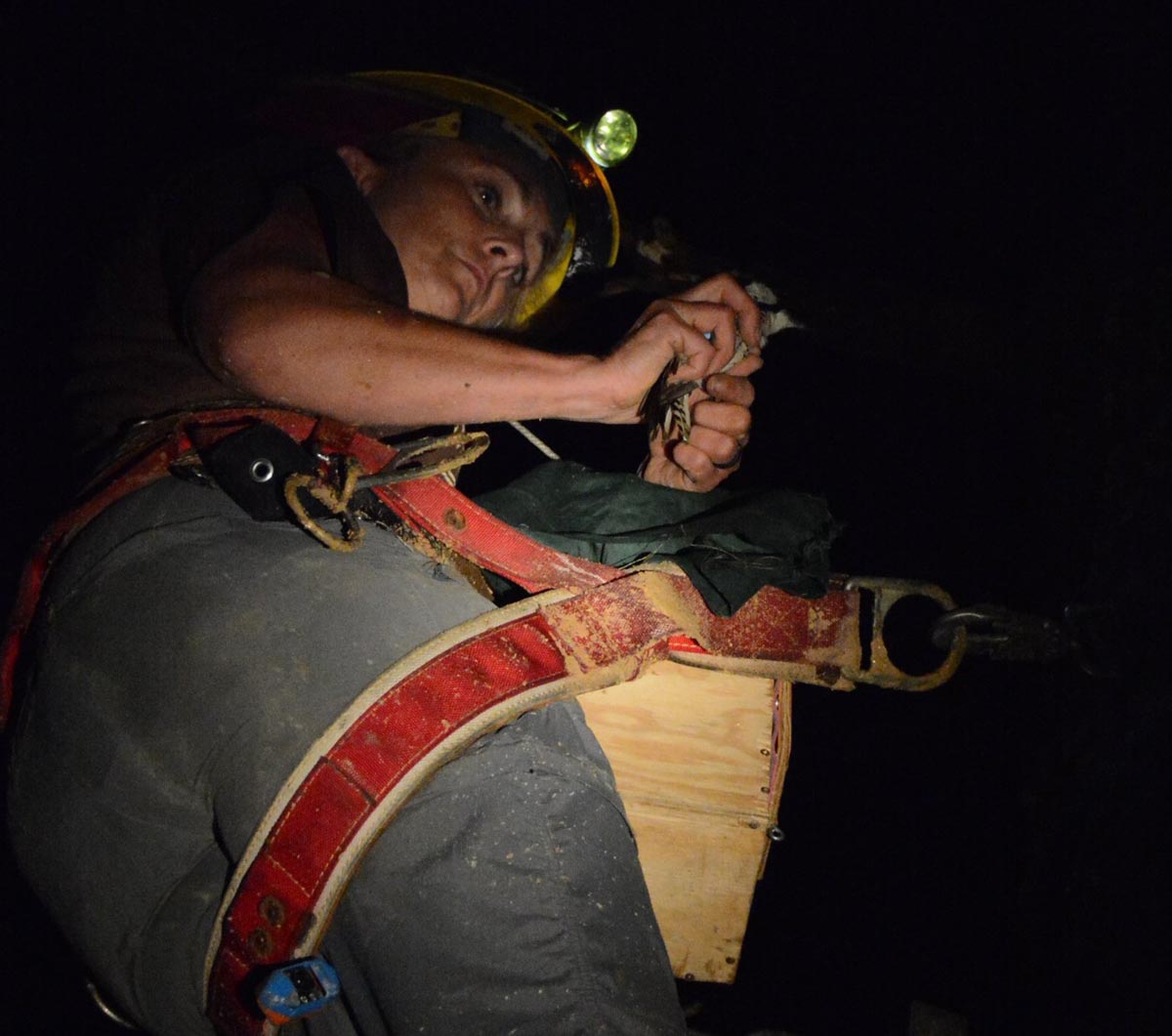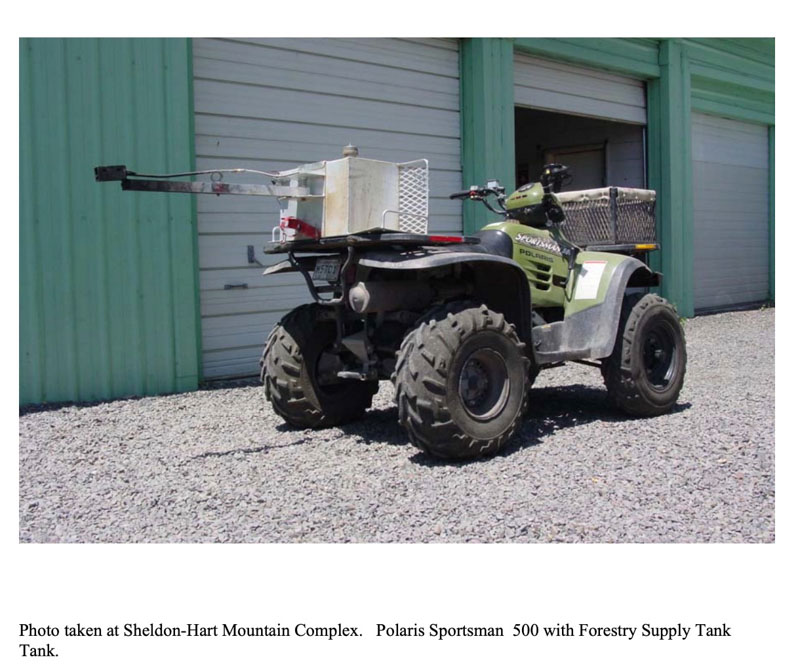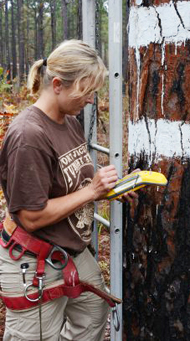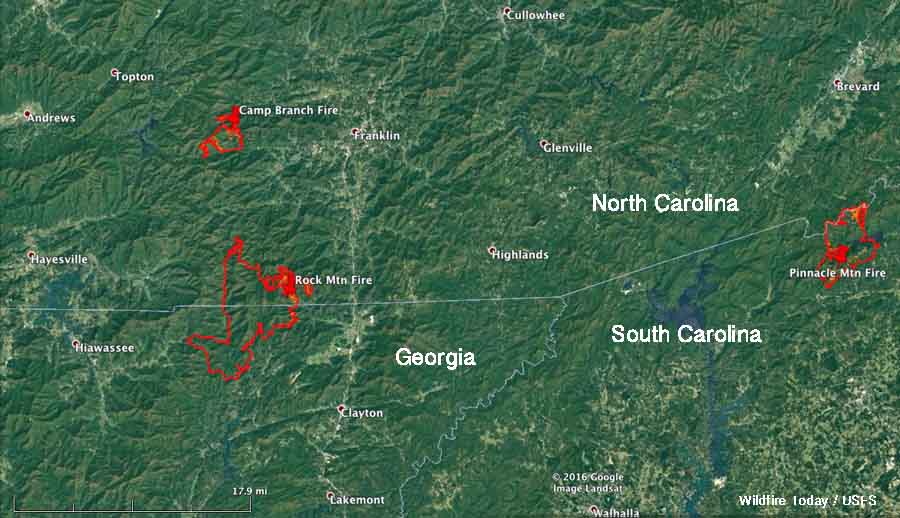
A Freedom of Information Act (FOIA) request filed by Wildfire Today has produced more information about the death of Nicole Hawkins, a wildlife biologist at Fort Jackson in South Carolina who died while working on a prescribed fire at the Army base May 22, 2019. She had worked as a civilian at the base since 2007, with much of her time spent in helping to bring back an endangered species, the red-cockaded woodpecker. One of the techniques used to improve the bird’s habitat is the use of prescribed fire. She was 45 at the time and the mother of two pre-teen sons.
The FOIA was filed with the U.S. Department of Labor’s Occupational Safety and Health Administration (OSHA), one of five entities investigating the fatality.
OSHA determined that Ms. Hawkins was a member of a six-person squad conducting the prescribed fire that day. The others were from the Department of Defense and contractors from Whitetail Environmental, LLC.
After a 10 a.m. briefing followed by a successful test burn they began ignition at 10:30 a.m. OSHA’s information reports that at that time the skies were fair, the temperature was 90 degrees, and there was a 5 mph wind out of the southeast. At noon a weather station at Congaree, SC about 10 miles to the southeast recorded 91 degrees, 55 percent relative humidity, winds out of the west at 1 mph gusting to 7 mph, and fuel temperature of 108 degrees.
Ms. Hawkins was operating a Yamaha All-Terrain Vehicle (ATV) equipped with a “power torch” made by Hayes Manufacturing. ATV torches are commonly used for igniting prescribed fires and burnouts on wildfires. They pump a small stream of a diesel/gasoline mixture through a nozzle where it is ignited. The fuel lands on the ground while still burning and ignites vegetation. The NWCG Standards for Ground Ignition Equipment (Feb. 2019) lists Hayes Manufacturing as one of five sources for ATV torches.

Most of the time Ms. Hawkins was paired with another worker. But occasionally on prescribed fires on the base one member would go off out of sight to do something quick and come right back.
Ms. Hawkins said over the radio that she was going to light around one of the red-cockaded woodpecker cavity trees and would be right back. It is not clear what time she said that, but at 11:30 a.m. the others knew she was working on that task and “all were in communication with each other for the next few minutes”, according to the information from OSHA.
At 12:14 p.m. she came on the radio and stated she was heading out of the burn area. One of the other firefighters parked his truck on the route she would be taking to wait for her.
At 12:23 p.m. the firefighters noticed a column of black smoke which was different from the white smoke normally produced by the prescribed fire. At 12:28 p.m. Ms. Hawkins did not respond to radio calls.
One of the workers found Ms. Hawkins on the ground next to her ATV, which were both on fire. She was presumed dead, according to OSHA. The period in which she last contacted anyone on the radio until the discovery of her body was 13 minutes. The dark smoke was seen 8 minutes after her last communication.
OSHA did not determine what caused the accident. A preliminary autopsy performed on May 23, 2019 by the Armed Forces Medical Examiner revealed no signs of trauma other than the injuries sustained from the fire. Their report also stated that they would not determine a cause and manner of death until receiving the toxicology results. The Army’s Criminal Investigation Division found no criminal activity associated with the fatality.
The radios the firefighters carried on chest harnesses had “man down” buttons which when pressed and held for two seconds would notify the Fort Jackson Fire Department that there was an emergency and it would provide the location from an internal GPS receiver. However the “man down” system had been deactivated for several weeks after several false alarms. Following the fatality it was turned back on, an action that was recommended by OSHA.
The U.S. Bureau of Alcohol, Tobacco, Firearms and Explosives is also investigating the incident. It is likely that they will thoroughly look into the cause of the fire that engulfed Ms. Hawkins and the ATV, to determine if she was entrapped and overcome by the spread of the prescribed fire, or if there was an incident related to the ATV torch.
OSHA found that the fuel mix used by Fort Jackson personnel that day was 50/50, gasoline/diesel.
In 2002 the National Wildfire Coordinating Group sent a message to the field after a firefighter was burned when flames erupted after removing the spout assembly from a drip torch that had just been extinguished. It contained approximately 35% gasoline and 65% diesel or 1 gallon of gasoline for every 1.9 gallons of diesel. In the message written by Wesley Throop, a Mechanical Engineer at the U.S. Forest Service’s Missoula Technology and Development Center, he stated:
The most volatile mixture authorized by the agency is 1 gallon of gasoline to 3 gallons of diesel. Use of this mixture carries the following warning the agency’s health and safety handbook: “Caution: 1 gallon of gasoline to 3 gallons of diesel fuel produces a very volatile mixture. This mix should be used only in appropriate fuel types and during periods of high humidity.”
The U.S. Fish & Wildlife service’s Standard Operating Procedure for the Mountain Prairie Area states: “The correct fuel mixture for the refuge’s ATV mounted torch is 1 part gasoline and 3 parts diesel fuel.”
An article written by Amanda Stamper for the Wildland Fire Lessons Learned Center published on March 14, 2017 also addresses the drip torch fuel mix.
More diesel than gasoline is perhaps the only cardinal rule when it comes to mix ratio, with somewhere between 3:1 and 4:1 [diesel to gas] being the most common.
On October 18 OSHA issued a Notice of Unsafe and Unhealthful Working Conditions to Fort Jackson. It stated that the Army base did not furnish “a place of employment free from recognized hazards that were causing or likely to cause death or serious physical harm, in that employees were exposed to burn hazards associated with control burning of forest vegetation.” And, on the day of the fatality Fort Jackson failed to ensure that employees “were protected from fire hazards while igniting or controlling the burn areas.”
OSHA suggested that Fort Jackson develop a mandatory procedure for igniting burns that includes use of a tracking system so that employees could be easily located.





